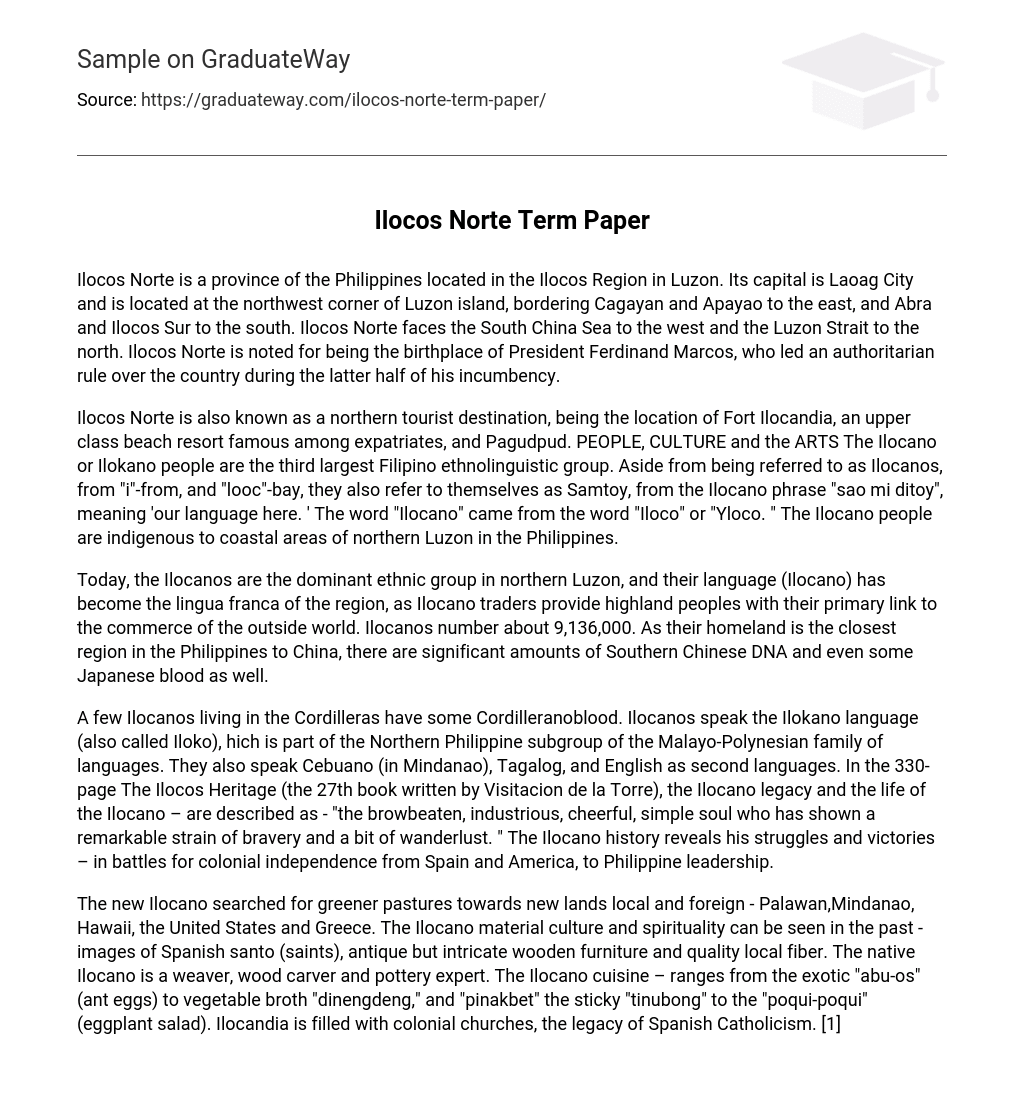Ilocos Norte is a province of the Philippines located in the Ilocos Region in Luzon. Its capital is Laoag City and it is located at the northwest corner of Luzon Island, bordering Cagayan and Apayao to the east, and Abra and Ilocos Sur to the south. Ilocos Norte faces the South China Sea to the west and the Luzon Strait to the north. Ilocos Norte is noted for being the birthplace of President Ferdinand Marcos, who led an authoritarian rule over the country during the latter half of his incumbency.
Ilocos Norte is also known as a northern tourist destination, being the location of Fort Ilocandia, an upper-class beach resort famous among expatriates, and Pagudpud.
People, Culture, and the Arts
The Ilocano or Ilokano people are the third-largest Filipino ethnolinguistic group. Aside from being referred to as Ilocanos, from “i”-from, and “looc”-bay, they also refer to themselves as Samtoy, from the Ilocano phrase “sao mi ditoy,” meaning ‘our language here.’ The word “Ilocano” came from the word “Iloco” or “Yloco.” The Ilocano people are indigenous to the coastal areas of northern Luzon in the Philippines.
Today, the Ilocanos are the dominant ethnic group in northern Luzon, and their language (Ilocano) has become the lingua franca of the region, as Ilocano traders provide highland peoples with their primary link to the commerce of the outside world. Ilocanos number about 9,136,000. As their homeland is the closest region in the Philippines to China, there are significant amounts of Southern Chinese DNA and even some Japanese blood as well.
A few Ilocanos living in the Cordilleras have some Cordillerano blood. Ilocanos speak the Ilokano language (also called Iloko), which is part of the Northern Philippine subgroup of the Malayo-Polynesian family of languages. They also speak Cebuano (in Mindanao), Tagalog, and English as second languages. In the 330-page book “The Ilocos Heritage” (the 27th book written by Visitacion de la Torre), the Ilocano legacy and the life of the Ilocano are described as “the browbeaten, industrious, cheerful, simple soul who has shown a remarkable strain of bravery and a bit of wanderlust.” The Ilocano history reveals their struggles and victories – in battles for colonial independence from Spain and America, to Philippine leadership.
The new Ilocano searched for greener pastures towards new lands local and foreign – Palawan, Mindanao, Hawaii, the United States, and Greece. The Ilocano material culture and spirituality can be seen in the past – images of Spanish santo (saints), antique but intricate wooden furniture, and quality local fiber. The native Ilocano is a weaver, woodcarver, and pottery expert. The Ilocano cuisine ranges from the exotic “abu-os” (ant eggs) to vegetable broth “dinengdeng,” and “pinakbet” the sticky “tinubong” to the “poqui-poqui” (eggplant salad). Ilocandia is filled with colonial churches, the legacy of Spanish Catholicism.





